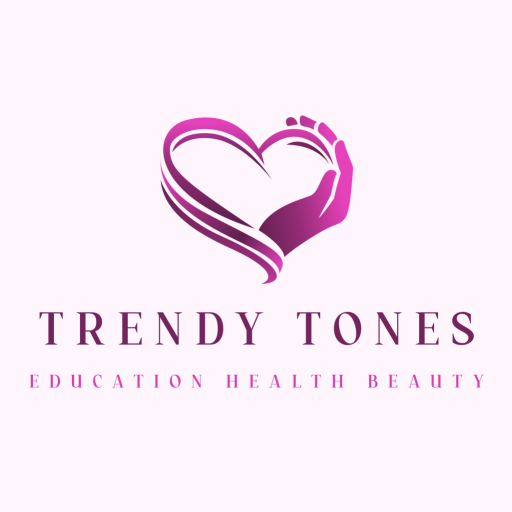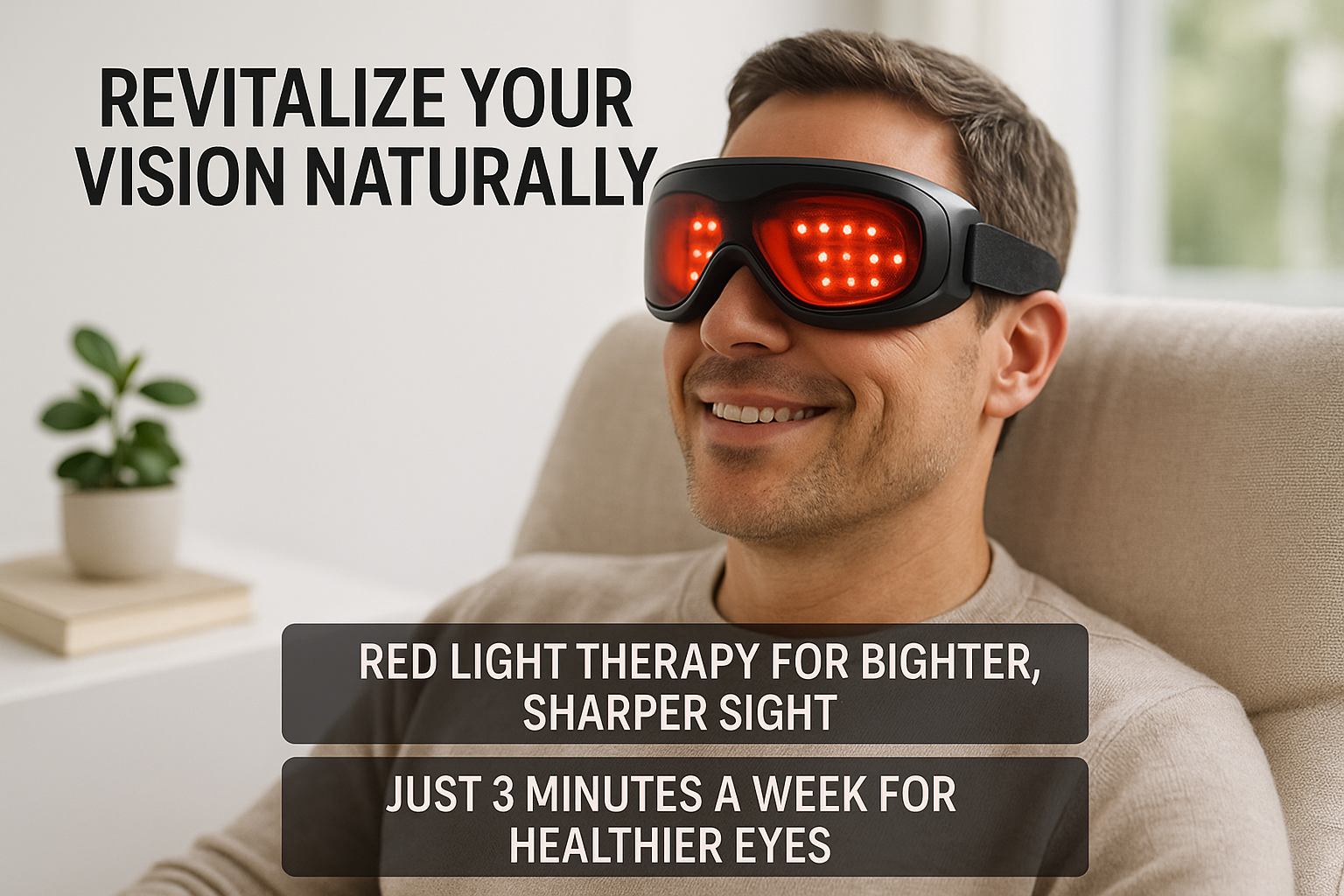#ad [recommended product]
Introduction
Are you looking to turn back the clock on your eyesight? We’re constantly glued to screens these days, so it’s no surprise that our eyes are feeling the strain. From digital eye strain to more serious age-related conditions, preserving our precious sight is more relevant than ever. Luckily there’s a simple yet scientifically intriguing potential solution: red light therapy for better vision. It might sound like something out of a science fiction novel, but this non-invasive treatment is gaining serious attention, and for good reason.
The idea is straightforward: exposing your eyes to specific wavelengths of red and near-infrared light for short periods could potentially rejuvenate aging retinal cells, boost cellular energy, and improve visual function. But does it actually work? Let’s explore the world of photobiomodulation and see what the science says about using red light for our eyes.
Effectiveness: Can Red Light Really Improve Your Sight?
The growing chatter around red light therapy for vision isn’t just based on anecdotal stories; it’s backed by an increasing body of scientific research that points to some pretty exciting possibilities.
Mechanism of Action: The Powerhouse of the Cell
So, how does a little bit of red light work its magic on our eyes? The secret lies in our mitochondria, often called the “powerhouses” of our cells.
Think of your cells like tiny batteries. As we age, these batteries start to lose their charge. The mitochondria in our retinal cells—the light-sensitive tissue at the back of our eye—are no exception. In fact, the retina has the highest metabolic demand in the body, meaning it’s packed with mitochondria and burns through a ton of energy. Over time, mitochondrial function declines, leading to reduced energy production (in the form of a molecule called ATP) and increased oxidative stress. This decline is a key factor in the development of age-related eye diseases like macular degeneration (AMD).
This is where red light therapy steps in. Specific wavelengths of deep red light (around 670 nanometers) are absorbed by an enzyme within the mitochondria called cytochrome c oxidase. This absorption gives the mitochondria a kickstart, helping them to:
- Boost ATP Production: It essentially recharges the cellular batteries, providing the retinal cells with more energy to function properly and repair themselves.
- Reduce Inflammation: It helps modulate inflammatory responses within the eye.
- Improve Cell Signaling: It can help improve the communication between cells, ensuring everything is working in harmony.
By improving mitochondrial function, red light therapy helps to restore the health and performance of aging retinal photoreceptors (the rods and cones), which can lead to tangible improvements in vision.
Clinical Research Results
The proof, as they say, is in the pudding. Several clinical studies have put red light therapy to the test, with promising results.
- A landmark study from 2021 found that just three minutes of exposure to 670 nm deep red light in the morning once a week could significantly improve color contrast vision in individuals over 40.
- Researchers discovered that this improvement could last for up to a week. The study highlighted that morning exposure was key, as mitochondrial performance naturally fluctuates throughout the day.
- Other studies have explored its potential for conditions like myopia, showing that it may slow the progression of myopia without any side effects.
While the results are exciting, it’s important to note that this is still an emerging field. More large-scale, long-term studies are needed to establish definitive treatment protocols.
Dosing: How Much Light is Right?
When it comes to red light therapy, more isn’t necessarily better. The “dose”—which includes the wavelength of light, the intensity, and the duration of exposure—is critical.
- Wavelength: The most studied and effective wavelength for retinal rejuvenation appears to be around 670 nm.
- Duration: Most studies involve very short exposure times, typically around three minutes per session.
- Frequency: The frequency can vary, from daily use to as little as once a week.
It is absolutely crucial to use a device that is specifically designed and tested for ocular use. Using a generic red light panel not intended for the eyes can be dangerous and could potentially damage your vision.
Comparable Efficacy to Other Treatments
How does red light therapy stack up against other treatments? For general age-related vision decline, there aren’t many direct competitors. Standard treatments often focus on managing advanced diseases rather than rejuvenating cellular function. For conditions like AMD, current treatments include vitamin supplements (AREDS2) for dry AMD and injections for wet AMD. Red light therapy for better vision offers a completely different, non-invasive approach that targets the underlying cellular aging process. It could potentially be used as a complementary therapy alongside traditional treatments, but you should always consult your ophthalmologist first.
Safety: A Clear View of the Risks
Any treatment that involves our eyes rightfully comes with a high degree of scrutiny. The good news is that when performed correctly with the right equipment, red light therapy has an excellent safety profile.
Adverse Effects
The primary concern with any light-based therapy is the potential for retinal damage from excessive heat or intensity. However, the devices used in clinical studies are of a much lower intensity than, say, looking at the sun or a laser pointer. When used as directed, reported adverse effects are minimal to non-existent. The key is using a commercially available device that has been cleared by regulatory bodies and is specifically designed for the eyes.
Drug Interactions
Currently, there are no known significant drug interactions with red light therapy for ocular use. However, if you are taking photosensitizing medications (drugs that make you more sensitive to light), it’s a conversation you must have with your doctor before starting any form of light therapy.
Precautions
- Always Consult a Professional: Before you even think about starting red light therapy, talk to your ophthalmologist or optometrist. They can properly diagnose any vision issues and determine if this therapy is appropriate for you.
- Use the Right Device: Do not improvise. Only use a device that is specifically engineered and clinically validated for safe use on the eyes.
- Follow Instructions to the Letter: Adhere strictly to the manufacturer’s guidelines regarding duration, frequency, and distance from the device.
- Listen to Your Body: If you experience any discomfort, headaches, or changes in your vision, stop the therapy immediately and consult your eye care professional.
Frequently Asked Questions (FAQs)
1. Can I use any red light panel on my eyes? Absolutely not. You must use a device that is specifically designed for ocular therapy. These devices use precise wavelengths and low energy levels to ensure safety and effectiveness. Using a high-powered panel meant for the body could cause serious and irreversible eye damage.
2. How long does it take to see results? Some studies have shown noticeable improvements in color contrast sensitivity after just a single session, with effects lasting up to a week. For more significant or long-term changes, consistent use over several weeks or months may be necessary.
3. Is red light therapy a cure for blindness? No, red light therapy is not a cure for blindness or a replacement for conventional medical treatments for serious eye diseases. It is being studied as a way to support cellular health, potentially slow the progression of certain conditions, and improve some aspects of visual function, particularly those related to aging.
4. Can this therapy help with digital eye strain? While not its primary studied purpose, it’s theoretically possible that by improving the energy efficiency of retinal cells, red light therapy could help the eyes better cope with sources of strain. However, more research is needed in this specific area.
Conclusion
The potential of using red light therapy for better vision is, without a doubt, a fascinating development in eye care. It presents a novel approach that targets the very engine of our cells, aiming to rejuvenate and restore function from the inside out. The science is young but compelling, suggesting that a few minutes of exposure to a specific shade of red light could help push back against the natural decline of our vision as we age.
The key to harnessing red light’s potential lies in safety, precision, and professional guidance. As research continues to illuminate the full spectrum of its benefits and limitations, red light therapy may very well become a mainstream tool in our arsenal for maintaining clear, vibrant vision for years to come.
References
- Shinhmar, H., Hogg, C., Neveu, M. et al. Weeklong improved colour contrasts sensitivity after single 670 nm exposures associated with enhanced mitochondrial function. Sci Rep 11, 22872 (2021). https://doi.org/10.1038/s41598-021-02311-1
- Xue F, Zhou Y. Illuminating eye care: the promise and future of red light therapy in ophthalmology. Graefes Arch Clin Exp Ophthalmol. 2025 Mar 19. doi: 10.1007/s00417-025-06800-1. Epub ahead of print. PMID: 40105942.
- Zhu Q, Cao X, Zhang Y, Zhou Y, Zhang J, Zhang X, Zhu Y, Xue L. Repeated Low-Level Red-Light Therapy for Controlling Onset and Progression of Myopia-a Review. Int J Med Sci. 2023 Sep 4;20(10):1363-1376. doi: 10.7150/ijms.85746. PMID: 37786442; PMCID: PMC10542022.
Recommended Story For You :

Look weight gain and weight loss are serious concerns of yours and I get it.

Flavourful Vegan Recipes Covering Everything From Burrito Bowls To Chocolate Mousse

The keto diet is not just a diet it is a lifestyle change!

Pizza is Doubly Addictive with Two Morphine-Like Compounds in Every Crusty-Chewy Slice!

Delicious diabetic recipes- over 500 recipes-Desserts-Entrees-Snacks-and more.

An amazing collection of easy and delicious keto recipes.

Homemade Desserts just got quicker easier and smarter.

Boosting your health is easier than you think- smoothies make everything taste better.



Comments
14 responses to “Red Light Therapy for Better Vision: A Brighter Outlook?”
itstitle
excerptsa
is there a generic androxal avaliable in the usa
buy cheapest androxal online
how to buy enclomiphene generic is it safe
buy enclomiphene purchase toronto
cheapest buy rifaximin cheap to buy online
buy rifaximin us overnight delivery
buy generic xifaxan australia
buying xifaxan canada on sale
get staxyn usa price
discount staxyn generic pharmacy online
buy cheap avodart generic equivalent
buy cheap avodart generic when available
cheapest buy dutasteride purchase uk
online order dutasteride cheap store
order flexeril cyclobenzaprine generic new zealand
cod saturday flexeril cyclobenzaprine
buy cheap gabapentin canada discount
buying gabapentin cheap pharmacy
purchase fildena cheap melbourne
get fildena australia price
order itraconazole no rx needed
buy cheap itraconazole generic vs brand name
bez lékařského předpisu levné kamagra
kamagra fedex dodání
kamagra coût australie
medicament kamagra pharmacie vente cependant